Inkjet-Printed Membrane for a Capacitive Acoustic Sensor: Development and Characterization Using Laser Vibrometer
Abstract
:1. Introduction
2. Experimental Details
2.1. Materials and Printing System
2.2. Fabrication
2.3. Experiments
3. Results and Discussions
3.1. Conductive Layer Printing on Thin Film
3.2. Bending Test
3.3. Acoustic Characterization of the Membrane Using Laser Doppler Vibrometer
4. Conclusions
Acknowledgments
Author Contributions
Conflicts of Interest
References
- Alsahlani, A.; Mukherjee, R. Dynamics of a circular membrane with an eccentric circular areal constraint: Analysis and accurate simulations. Simul. Model. Pract. Theory 2013, 31, 149–168. [Google Scholar] [CrossRef]
- Sosa, M.; Carneiro, A.A.O.; Colafemina, J.F.; Baffa, O. A magnetic probe to study the vibration of the tympanic membrane. J. Magn. Magn. Mater 2001, 226, 2067–2069. [Google Scholar] [CrossRef]
- Ruffier, F.; Benacchio, S.; Expert, F.; Ogam, E. A tiny directional sound sensor inspired by crickets designed for micro-air vehicles. In Proceedings of the 2011 IEEE Sensors, Limerick, Ireland, 28–31 October 2011; pp. 970–973. [Google Scholar]
- Haque, R.I.; Ogam, E.; Loussert, C.; Benaben, P.; Boddaert, X. Fabrication of capacitive acoustic resonators combining 3D printing and 2D inkjet printing techniques. Sensors 2015, 15, 26018–26038. [Google Scholar] [CrossRef] [PubMed]
- Kamyshny, A.; Steinke, J.; Magdassi, S. Metal-based inkjet inks for printed electronics. Open Appl. Phys. J. 2011, 4, 19–36. [Google Scholar] [CrossRef]
- Suganuma, K. Introduction to Printed Electronics; Springer Science & Business Media: Berlin/Heidelberg, Germany, 2014; Volume 74. [Google Scholar]
- Huang, Q.; Shen, W.; Xu, Q.; Tan, R.; Song, W. Room-temperature sintering of conductive Ag films on paper. Mater. Lett. 2014, 123, 124–127. [Google Scholar] [CrossRef]
- Staff, C.B. Printed Electronics: The Future at Your Fingertips. Available online: http://www.computerarts.co.uk/blog/printed-electronics-future-your-fingertips-133664 (accessed on 14 December 2014).
- Gustafsson, G. Printed and Organic Electronics. Available online: https://www.acreo.se/expertise/printed-electronics (accessed on 26 June 2015).
- Arnesen, H.; Ekern, K. Thinfilm Receives First Order for Brand Protection Solution. 2013. Available online: http://thinfilm.no/2013/03/22/thinfilm-receives-first-order-for-brand-protection-system/ (accessed on 2 May 2017).
- Wondmagegn, W.T.; Satyala, N.T.; Stiegler, H.J.; Quevedo-Lopez, M.A.; Forsythe, E.W.; Pieper, R.J.; Gnade, B.E. Simulation based performance comparison of transistors designed using standard photolithographic and coarse printing design specifications. Thin Solid Films 2011, 519, 1943–1949. [Google Scholar] [CrossRef]
- Nagel, M.; Lippert, T. Laser-induced forward transfer for the fabrication of devices. In Nanomaterials: Processing and Characterization with Lasers; Singh, S.C., Zeng, H.B., Guo, C., Cai, W.P., Eds.; Wiley-VCH: Weinheim, Germany, 2012; pp. 255–306. [Google Scholar]
- Nallan, H.C.; Sadie, J.A.; Kitsomboonloha, R.; Volkman, S.K.; Subramanian, V. Systematic design of jettable nanoparticle-based inkjet inks: Rheology, acoustics, and jettability. Langmuir 2014, 30, 13470–13477. [Google Scholar] [CrossRef] [PubMed]
- Robin, M.; Kuai, W.; Amela-Cortes, M.; Cordier, S.; Molard, Y.; Mohammed-Brahim, T.; Jacques, E.; Harnois, M. Epoxy based ink as versatile material for inkjet-printed devices. ACS Appl. Mater. Interfaces 2015, 7, 21975–21984. [Google Scholar] [CrossRef] [PubMed]
- Perelaer, J.; de Gans, B.J.; Schubert, U.S. Ink-jet printing and microwave sintering of conductive silver tracks. Adv. Mater. 2006, 18, 2101–2104. [Google Scholar] [CrossRef]
- Allen, M.L.; Aronniemi, M.; Mattila, T.; Alastalo, A.; Ojanperä, K.; Suhonen, M.; Seppä, H. Electrical sintering of nanoparticle structures. Nanotechnology 2008, 19, 175201. [Google Scholar] [CrossRef] [PubMed]
- Ko, S.H.; Pan, H.; Grigoropoulos, C.P.; Luscombe, C.K.; Fréchet, J.M.; Poulikakos, D. All-inkjet-printed flexible electronics fabrication on a polymer substrate by low-temperature high-resolution selective laser sintering of metal nanoparticles. Nanotechnology 2007, 18, 345202. [Google Scholar] [CrossRef]
- Perelaer, J.; Smith, P.J.; Mager, D.; Soltman, D.; Volkman, S.K.; Subramanian, V.; Korvink, J.G.; Schubert, U.S. Printed electronics: The challenges involved in printing devices, interconnects, and contacts based on inorganic materials. J. Mater. Chem. 2010, 20, 8446. [Google Scholar] [CrossRef]
- Schroder, K.A. Mechanisms of photonic curingTM: Processing high temperature films on low temperature substrates. Nanotechnology 2011, 2, 220–223. [Google Scholar]
- Schroder, K.A.; McCool, S.C.; Furlan, W.F. Broadcast photonic curing of metallic nanoparticle films. NSTI-Nanotech. 2006, 3, 1–4. [Google Scholar]
- Wallace, D.; Hayes, D.; Chen, T.; Shah, V.; Radulescu, D.; Cooley, P.; Wachtler, K.; Nallani, A. Ink-jet as a MEMS manufacturing tool. In Proceedings of the 2007 First International Conference on Integration and Commercialization of Micro and Nanosystems, Sanya, China, 10–13 January 2007; pp. 1161–1168. [Google Scholar]
- Fuller, S.B.; Wilhelm, E.J.; Jacobson, J.M. Ink-jet printed nanoparticle microelectromechanical systems. J. Microelectromech. Syst. 2002, 11, 54–60. [Google Scholar] [CrossRef]
- Horning, R.; Ohnstein, T.; Youngner, D. Method for Making Devices Using Ink Jet Printing. U.S. Patent 7,112,463 B2, 26 September 2006. [Google Scholar]
- Haque, R.I.; Loussert, C.; Sergent, M.; Benaben, P.; Boddaert, X. Optimization of capacitive acoustic resonant sensor using numerical simulation and design of dxperiment. Sensors 2015, 15, 8945–8967. [Google Scholar] [CrossRef] [PubMed]
- Scheeper, P.R.; Van der Donk, A.G.H.; Olthuis, W.; Bergveld, P. A review of silicon microphones. Sens. Actuators A Phys. 1994, 44, 1–11. [Google Scholar] [CrossRef]
- Schomburg, W.K. Membranes. In Introduction to Microsystem Design; Springer: Berlin/Heidelberg, Germany, 2011; Volume 1, pp. 29–52. [Google Scholar]
- Mitchell, A.W.; Ning, Y.B.; Tait, N. Fabrication of a Surface Micromachined Capacitive Microphone using a Dry-etch Process. U.S. Patent 5,573,679 A, 12 November 1996. [Google Scholar]
- Biswas, A.; Weller, T.; Katehi, L.P.B. Stress determination of micromembranes using laser vibrometry. Rev. Sci. Instrum. 1996, 67, 1965–1969. [Google Scholar] [CrossRef]
- Bower, A.F. Applied Mechanics of Solids; CRC Press: Boca Raton, FL, USA, 2010. [Google Scholar]
- Morse, P.M.; Ingard, K.U. Theoretical Acoustics; Princeton University Press: Princeton, NJ, USA, 1986. [Google Scholar]
- Matula, R.A. Electrical resistivity of copper, gold, palladium, and silver. J. Phys. Chem. Ref. Data 1979, 8, 1147–1298. [Google Scholar] [CrossRef]
- Serway, R.A. Principles of Physics, 2nd ed.; Saunders College Publishing: London, UK, 1998. [Google Scholar]
- Griffiths, D.J. Electrodynamics. In Introduction to Electrodynamics, 4th ed.; Addison-Wesley: Boston, MA, USA, 2013; pp. 296–354. [Google Scholar]
- Humbe, A.B.; Deshmukh, P.A.; Jadhav, C.P.; Wadgane, S.R. Review of laser plastic welding process. Int. J. Res. Eng. Technol. 2014, 2, 191–206. [Google Scholar]
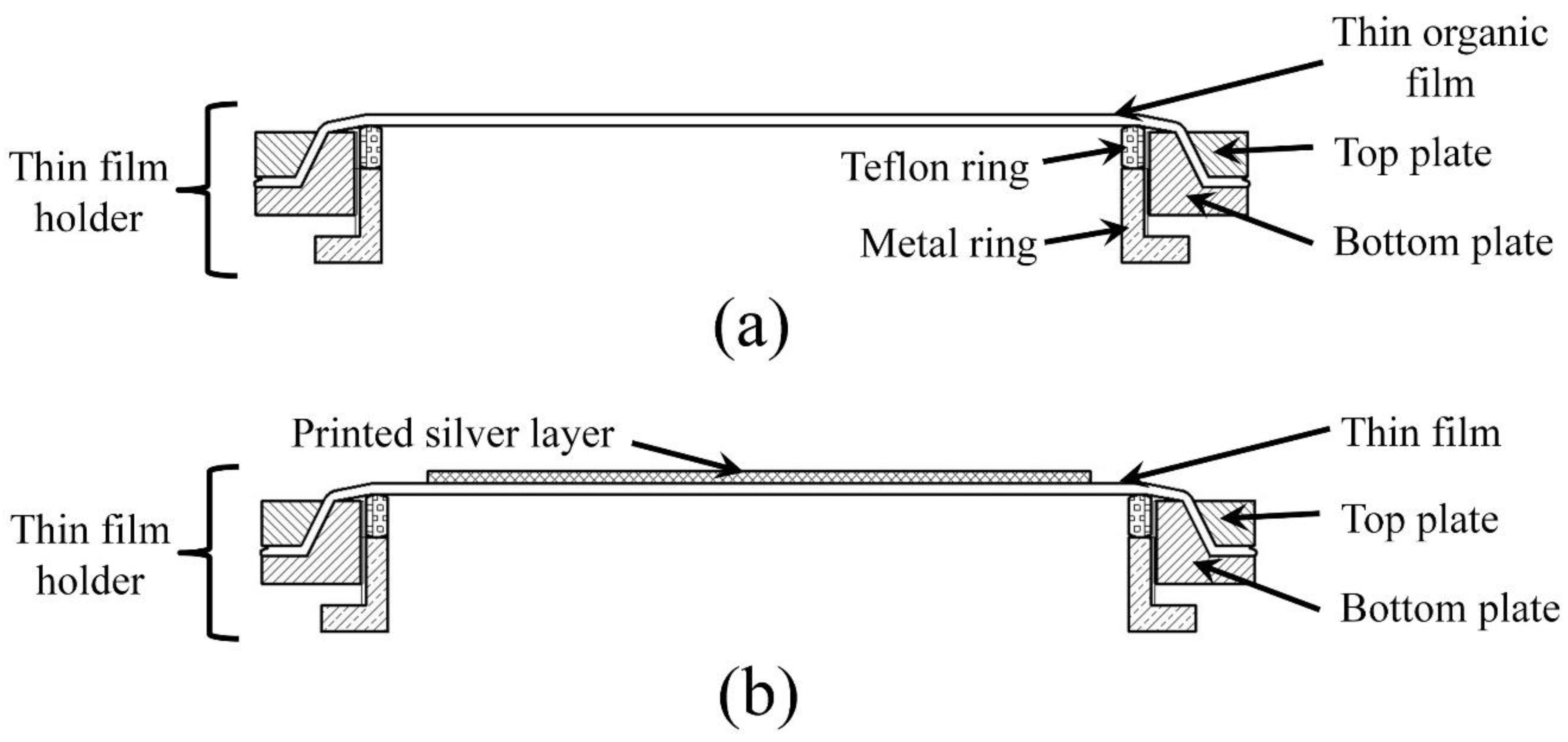

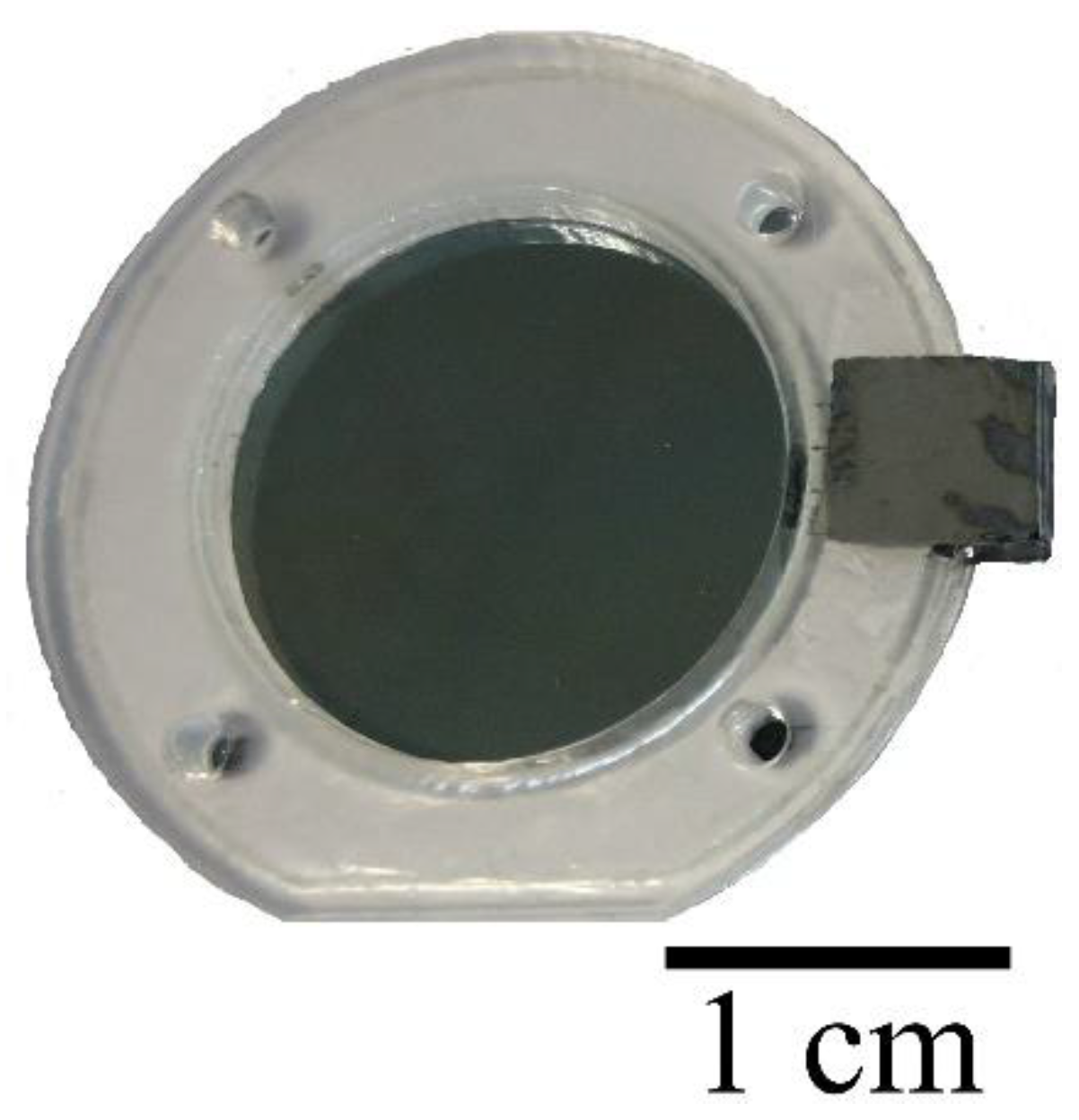

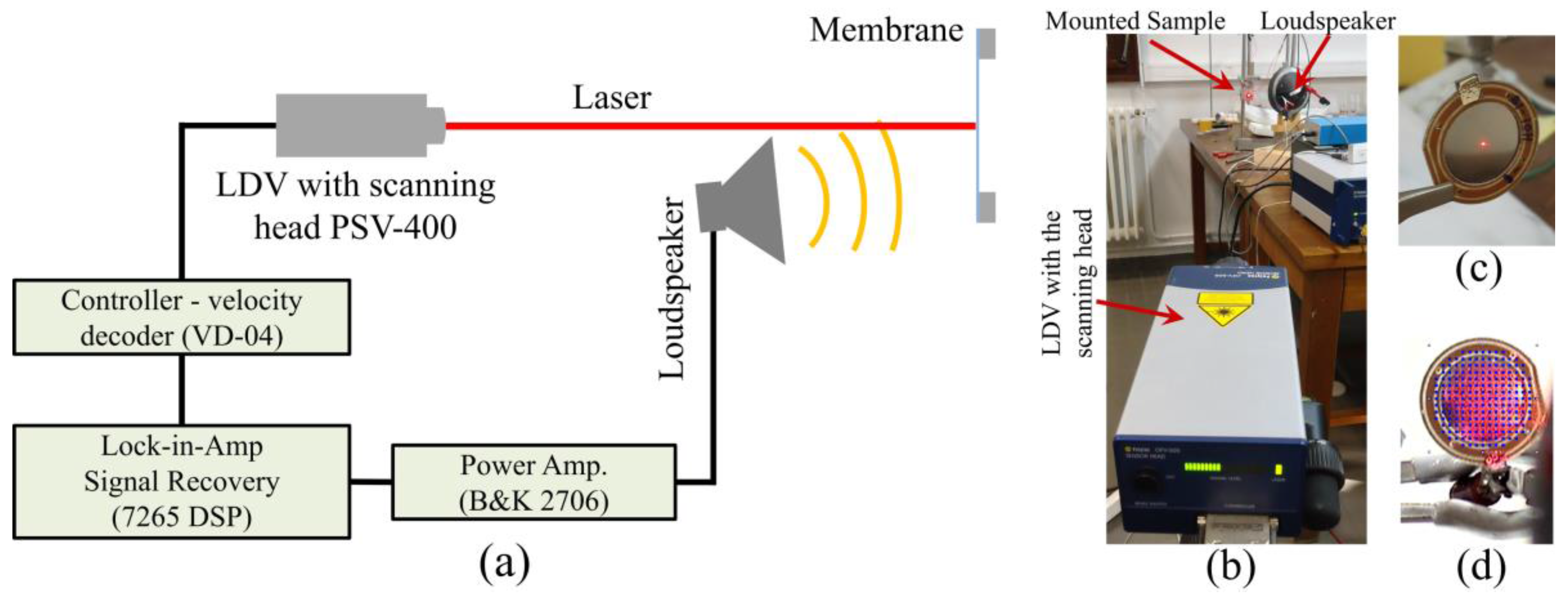
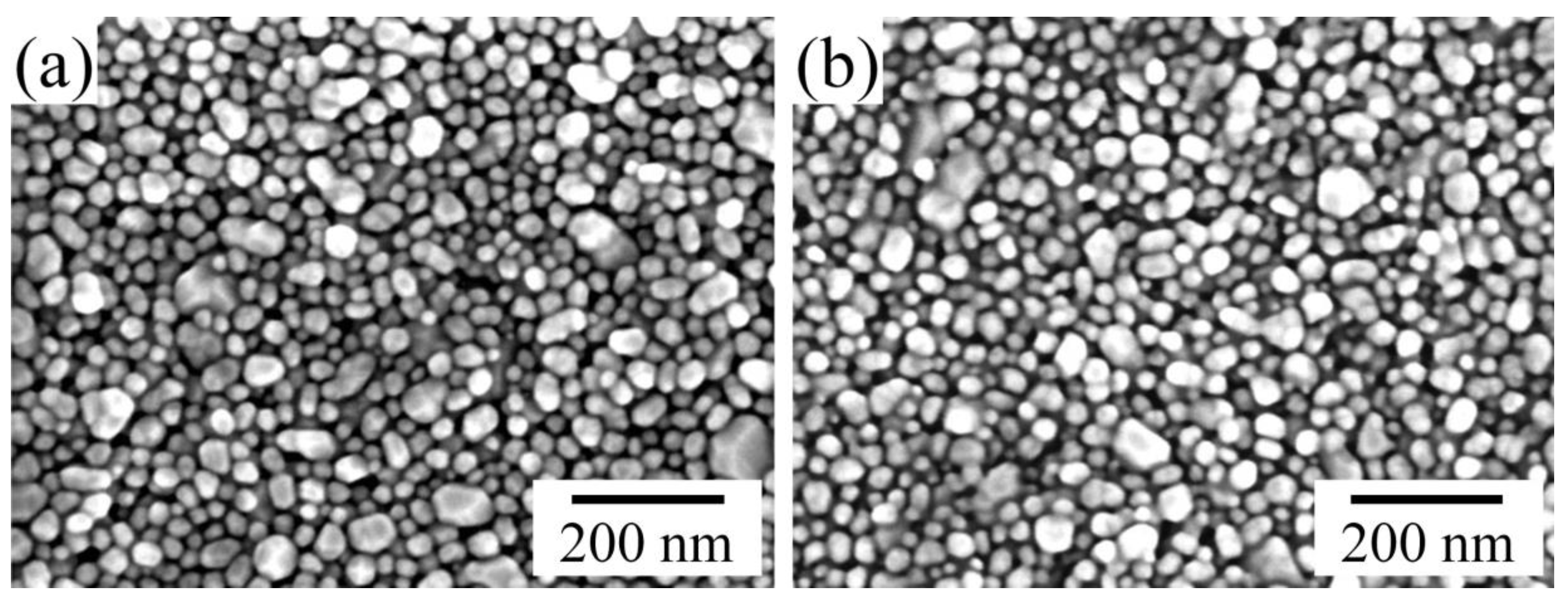
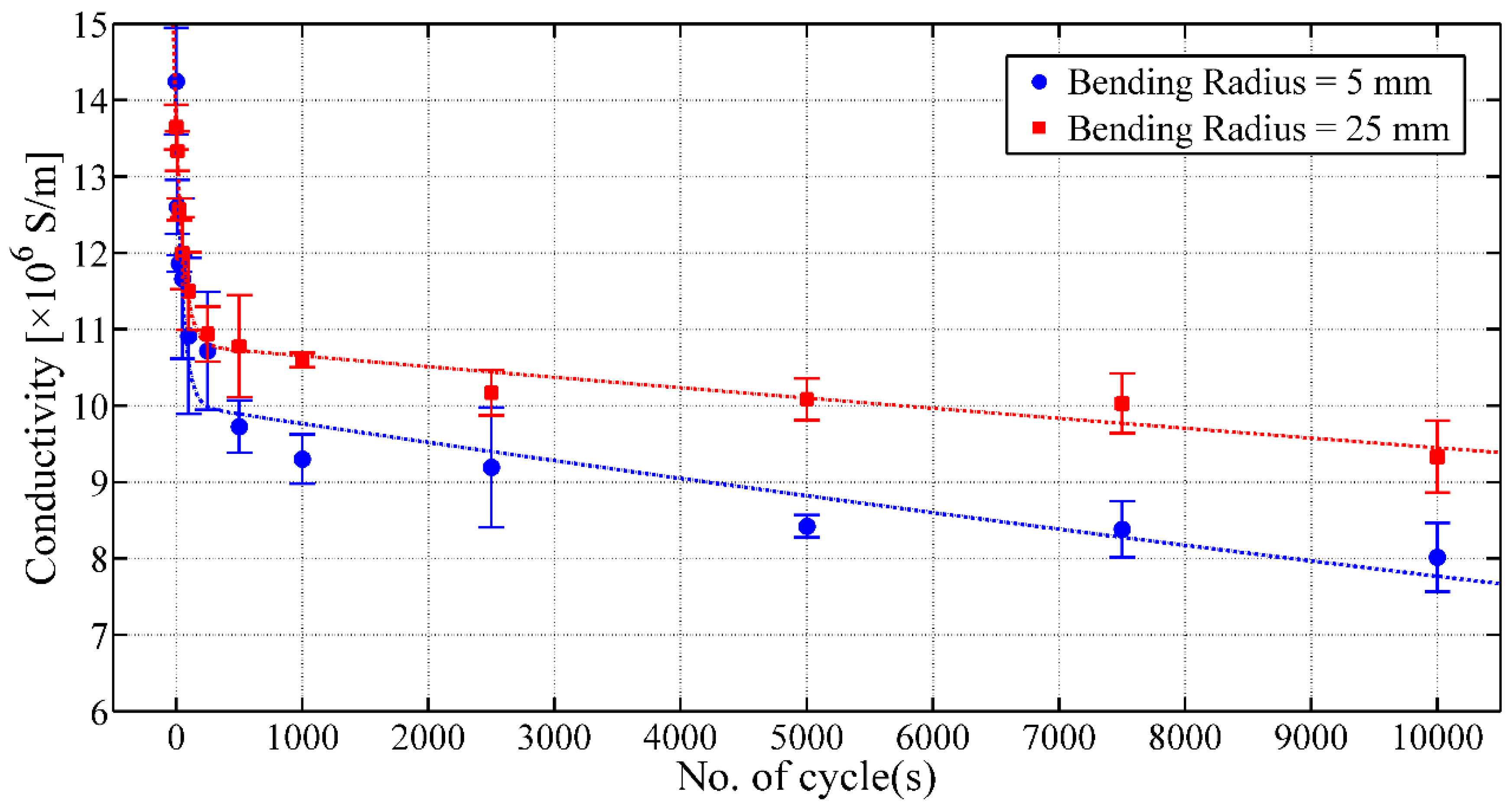
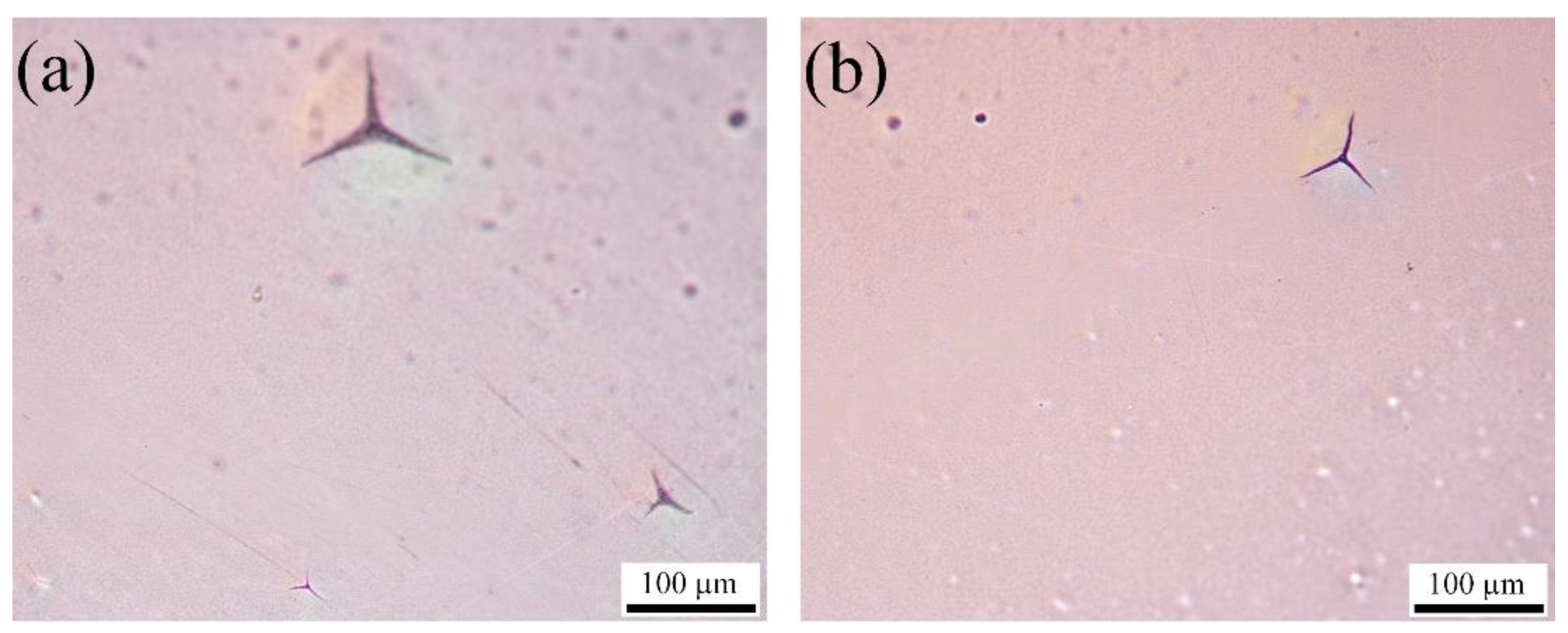
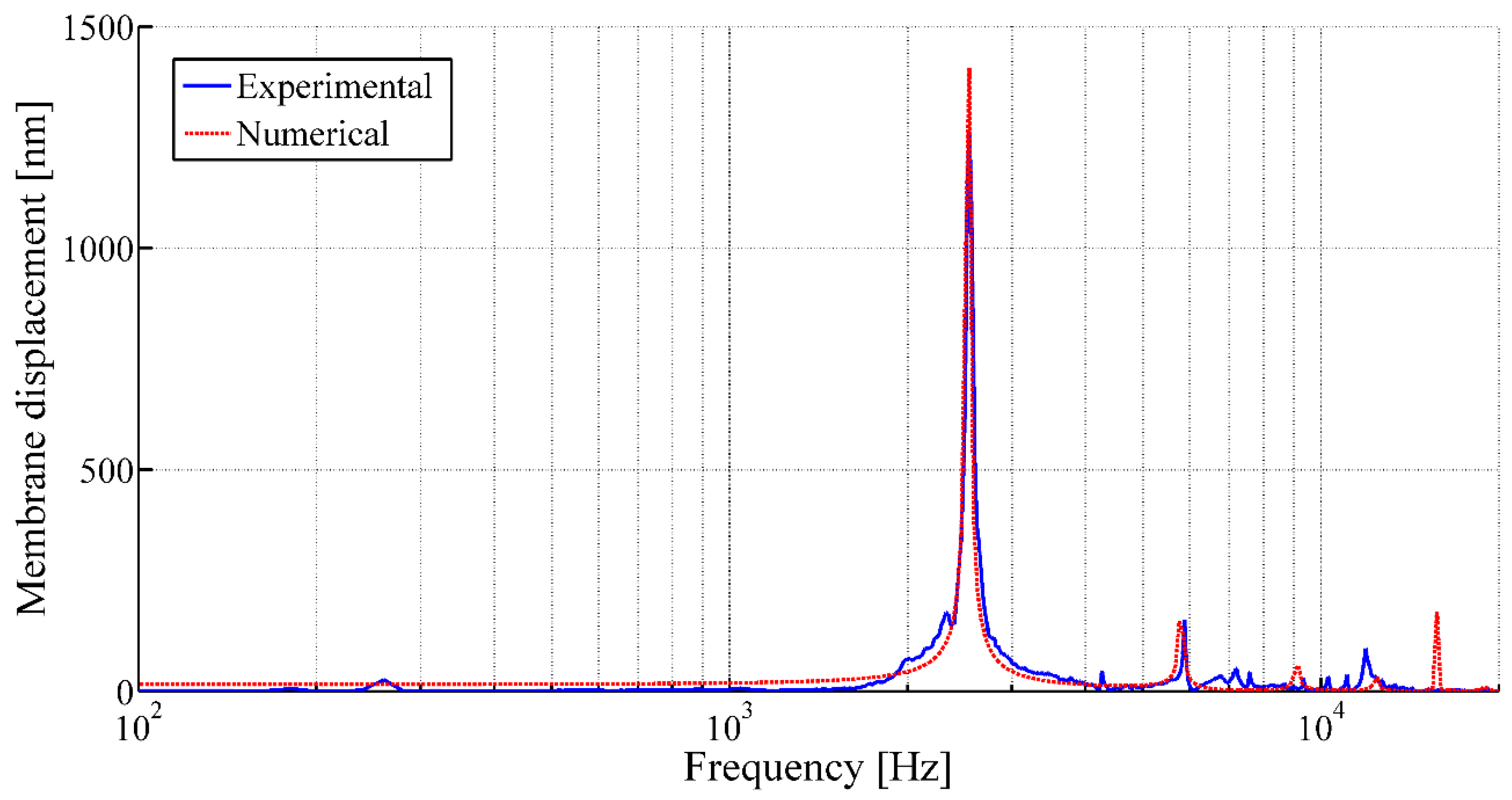
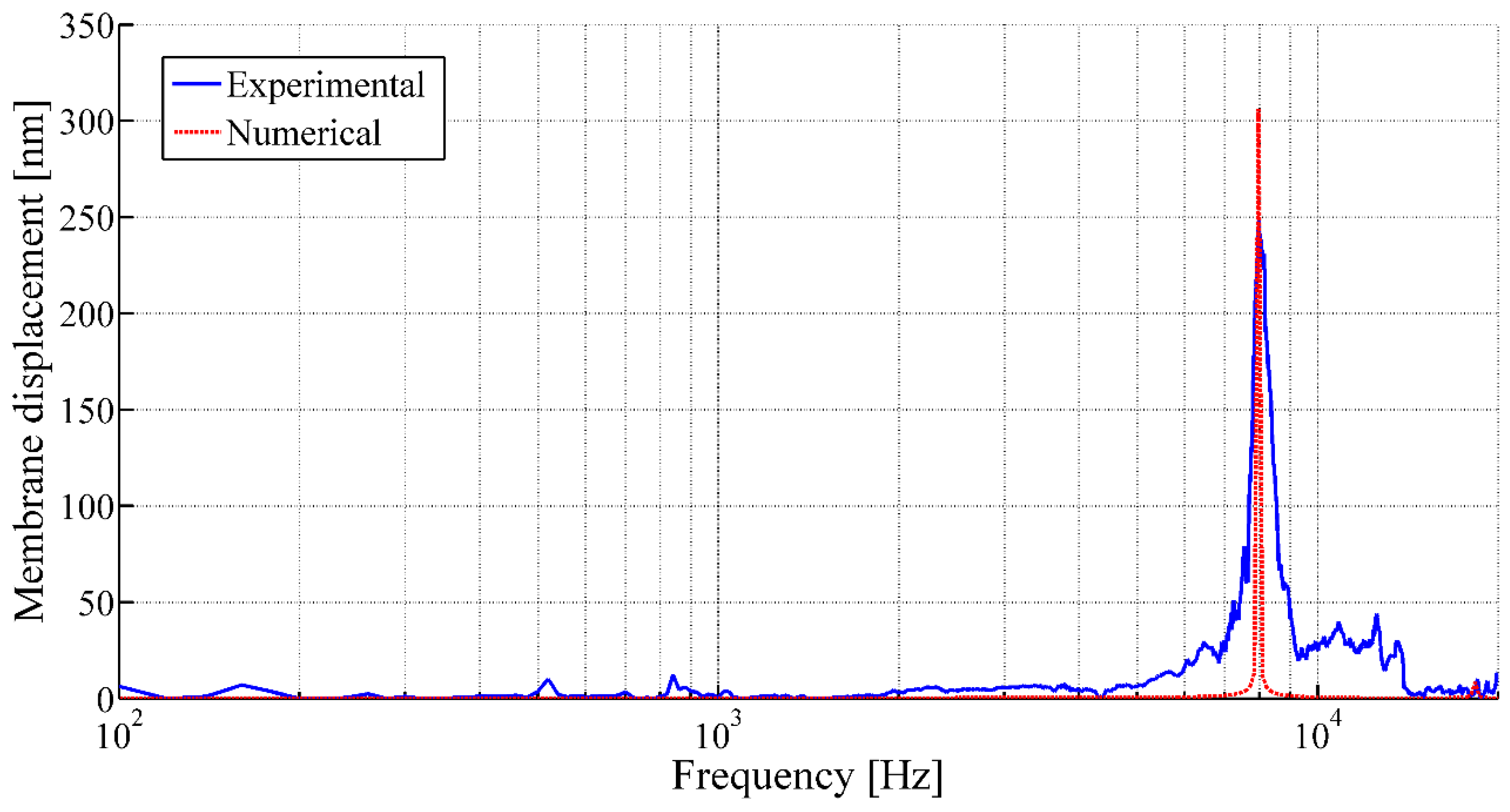

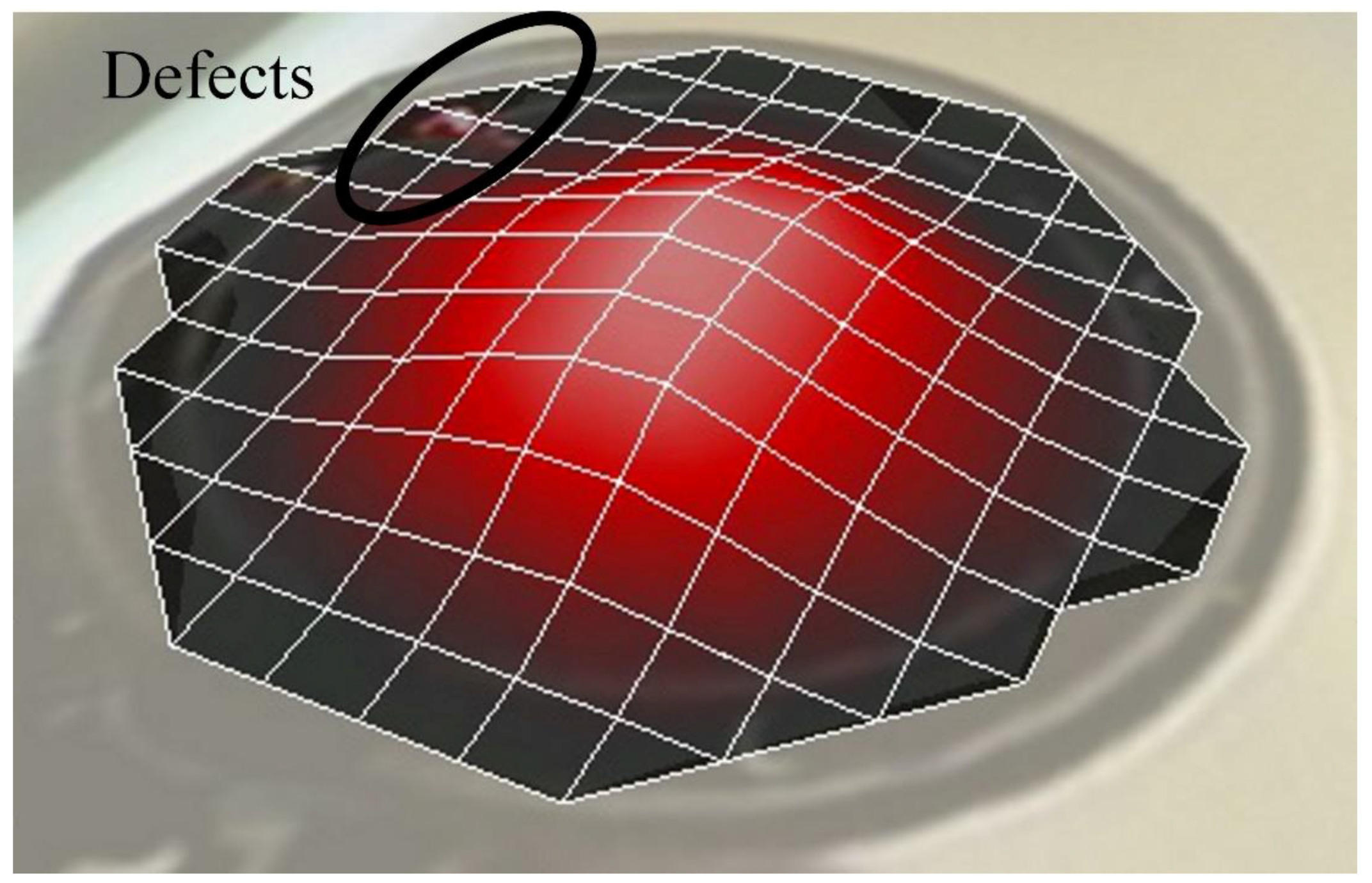
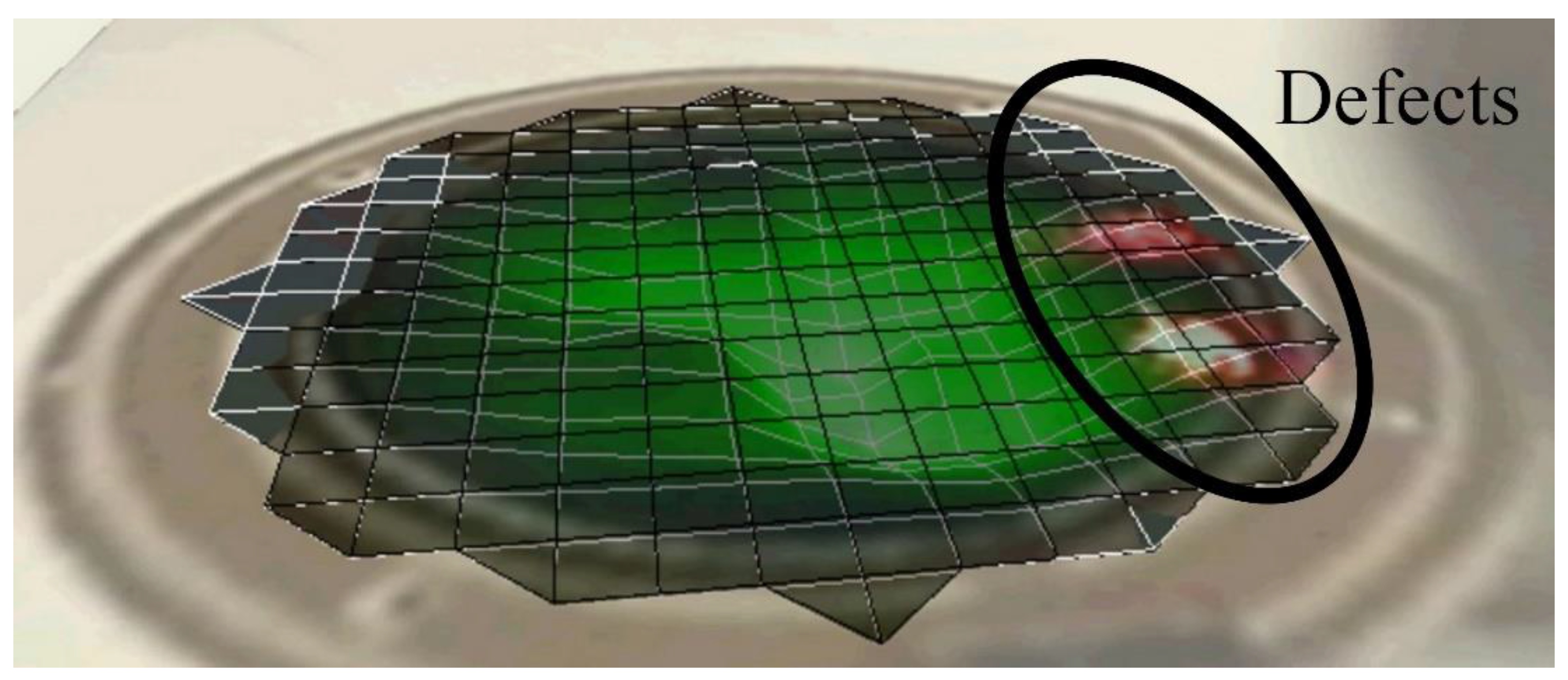
| Mode Number | Factor |
|---|---|
| 1 | |
| 2 | |
| 3 | |
| 4 | |
| 5 | |
| 6 |
| Parameter | Value |
|---|---|
| Drop spacing | 25 µm |
| Firing voltage | 28 V |
| Jetting frequency | 13.3 kHz |
| Nozzle temperature | 38 °C |
| Substrate temperature | Room temperature |
| Meniscus vacuum | 4.5 inches H2O or 1120.9 Pa |
| Cartridge height | 0.8 mm |
| No. of nozzles used | 9 |
| Membrane | Experimental Result | Numerical Result | |||
|---|---|---|---|---|---|
| Radius () | Thickness () | First resonant frequency () | Calculated membrane tension () | First resonant frequency () | Calculated membrane tension () |
| mm | μm | Hz | N/m | Hz | N/m |
| 4 | 8 | 7980 | 77.34 | 7963.4 | 77.0 |
| 4 | 23 | 7310 | 186.3 | 7259.4 | 184.0 |
| 6 | 8 | 4780 | 62.4 | 4786.3 | 62.6 |
| 6 | 23 | 3880 | 118.3 | 3856.6 | 116.9 |
| 8 | 8 | 3840 | 71.6 | 3856.6 | 72.3 |
| 8 | 23 | 3330 | 154.9 | 3305.2 | 152.6 |
| 10 | 8 | 2540 | 49 | 2542.7 | 49.1 |
| 10 | 23 | 2730 | 162.6 | 2704.6 | 159.6 |
© 2017 by the authors. Licensee MDPI, Basel, Switzerland. This article is an open access article distributed under the terms and conditions of the Creative Commons Attribution (CC BY) license (http://creativecommons.org/licenses/by/4.0/).
Share and Cite
Haque, R.I.; Ogam, E.; Benaben, P.; Boddaert, X. Inkjet-Printed Membrane for a Capacitive Acoustic Sensor: Development and Characterization Using Laser Vibrometer. Sensors 2017, 17, 1056. https://doi.org/10.3390/s17051056
Haque RI, Ogam E, Benaben P, Boddaert X. Inkjet-Printed Membrane for a Capacitive Acoustic Sensor: Development and Characterization Using Laser Vibrometer. Sensors. 2017; 17(5):1056. https://doi.org/10.3390/s17051056
Chicago/Turabian StyleHaque, Rubaiyet Iftekharul, Erick Ogam, Patrick Benaben, and Xavier Boddaert. 2017. "Inkjet-Printed Membrane for a Capacitive Acoustic Sensor: Development and Characterization Using Laser Vibrometer" Sensors 17, no. 5: 1056. https://doi.org/10.3390/s17051056






